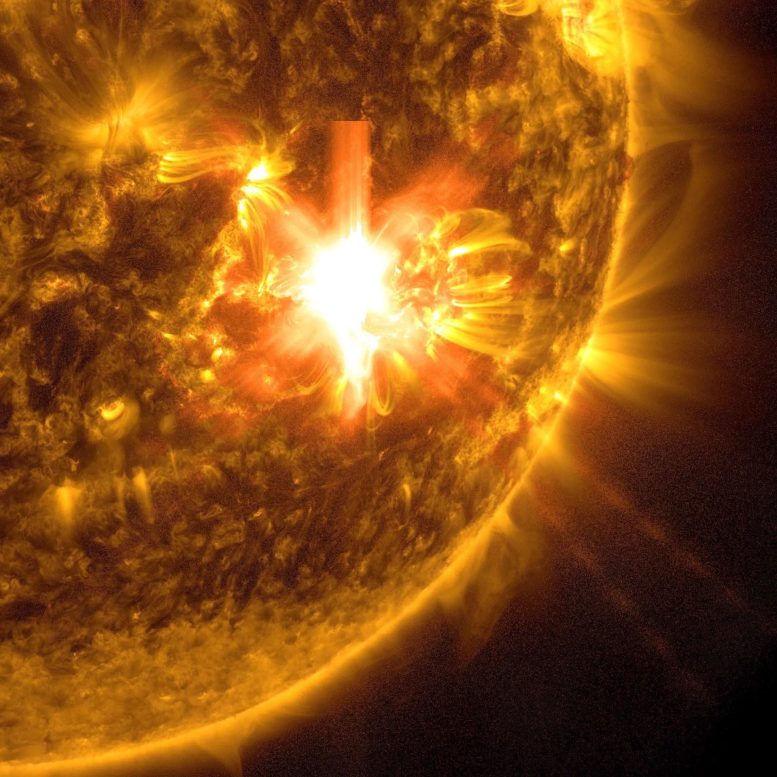
NASA’s Solar Dynamics Observatory captured this image of a solar flare – as seen in the bright flash toward the middle of the image – on May 10, 2024. The image shows a subset of extreme ultraviolet light that highlights the extremely hot material in flares and which is colorized in gold. Credit: NASA/SDO
The Sun emitted a powerful solar flare, peaking at 2:54 a.m. ET on May 10, 2024. NASA’s Solar Dynamics Observatory, which watches the Sun constantly, captured an image of the event. This flare is classified as an X3.9 flare. X-class denotes the most intense flares, while the number provides more information about its strength. There have been numerous X-class flares in recent days, and NASA observed 82 intense flares between May 3 and May 9, 2024.
Solar flares are sudden and intense bursts of radiation emitted from the Sun’s atmosphere, specifically from regions where the magnetic field is very strong and complex. These flares are a manifestation of the release of magnetic energy and can last from minutes to hours. The energy released during a solar flare is primarily in the form of electromagnetic radiation, which includes radio waves, ultraviolet light, x-rays, and gamma rays.
The intensity and potential impact of solar flares on Earth are categorized using a classification system developed by the National Oceanic and Atmospheric Administration (NOAA). Flares are rated based on their X-ray brightness in the wavelength range of 1 to 8 Angstroms, as detected by the GOES (Geostationary Operational Environmental Satellite) spacecraft.
The classes are defined as follows:
- X-class flares: These are the most intense flares. They can cause radio blackouts on Earth and long-lasting radiation storms in the upper atmosphere. The numerical suffix provides more details on their strength, with an X2 being twice as intense as an X1, an X3 being three times as intense, and so on.
- M-class flares: These are medium-sized flares that can cause brief radio blackouts that affect Earth’s polar regions. Minor radiation storms might follow an M-class flare.
- C-class flares: These are small flares with few noticeable consequences on Earth.
- B-class and A-class flares: These are even smaller with minimal or no effect on Earth.
The classification system is logarithmic, so each letter represents a tenfold increase in energy output, making X-class flares ten times more powerful than M-class flares and a hundred times more powerful than C-class flares. This system helps scientists and relevant authorities predict the potential impacts of solar activity and prepare for any disruptions they might cause, especially to communications and navigation systems on Earth.









Be the first to comment on "Cosmic Firestorm: Sun Unleashes Powerful X3.9 Solar Flare"